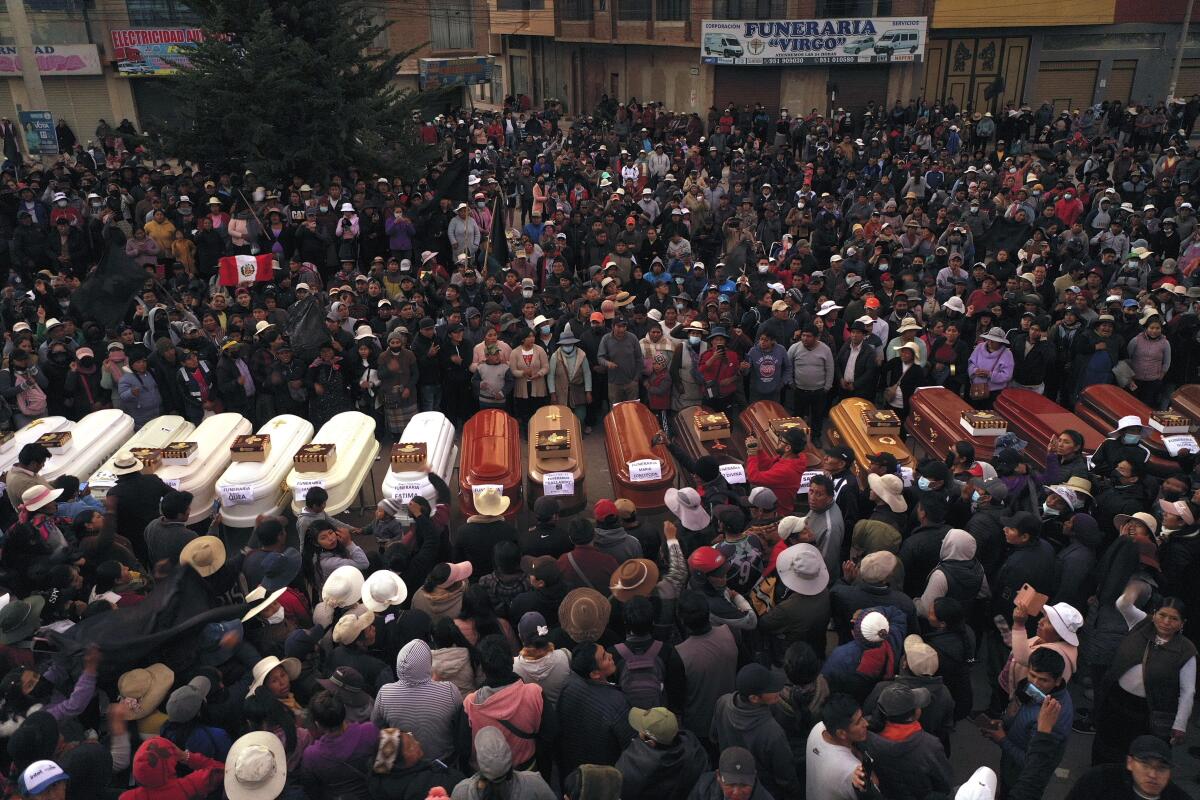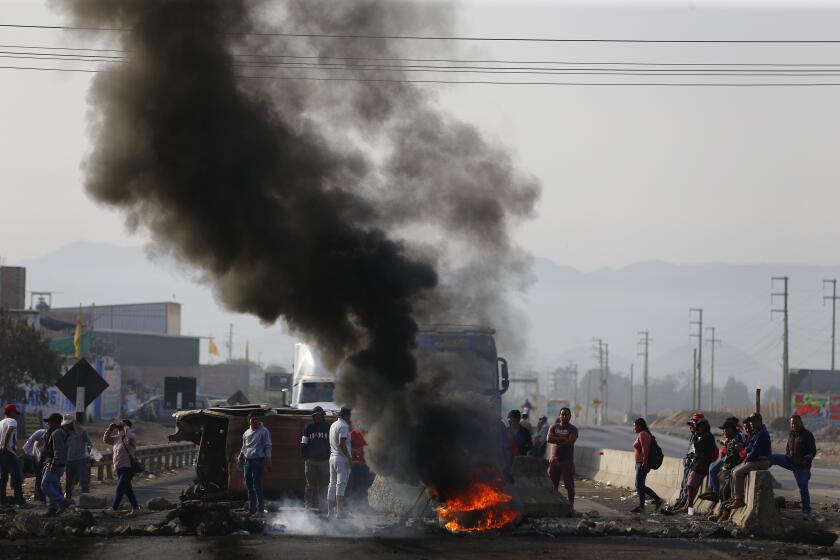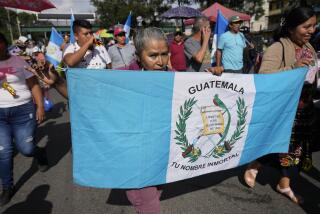Police officer burned alive as death toll in Peru’s political unrest rises to 47

- Share via
LIMA, Peru — A police officer on patrol was attacked and burned to death by protesters in the Peruvian region of Puno as the death toll from demonstrations in the wake of the ouster of former President Pedro Castillo rose to 47, authorities said.
Since the protests began in early December after Castillo’s dismissal, 39 civilians have been killed in clashes with police and another seven have died in traffic accidents related to the unrest, according to Peru’s ombudsman’s office.
José Luis Soncco Quispe, 29, was on patrol Monday night with a fellow officer in Juliaca, a city near the border with Bolivia and Lake Titicaca, when they were attacked by a mob that later set fire to their vehicle, according to police reports.
Soncco’s partner in the patrol car, Ronald Villasante Toque, said the men were “detained and physically attacked by some 350 protesters,” according to the reports.
Villasante was taken to a hospital in Lima with head injuries after being beaten.
Prime Minister Alberto Otárola confirmed Soncco’s death in a session of Congress, saying the men were attacked by protesters.
“Police arrived at the scene and found that one officer had been beaten and tied up, and the other, Luis Soncco Quispe, unfortunately had died,” he said. “He was burned alive in his patrol car.”
While democratic elections are held regularly in Peru, critics say that the results often have more to do with settling scores and politicians getting rich than installing effective governments.
Otárola announced a three-day curfew from 8 p.m. to 4 a.m. in Puno, and a day of mourning Wednesday for the fallen.
Soncco’s slaying came after the killing of 17 people Monday in Juliaca as protests seeking immediate elections resumed in neglected rural areas of the country still loyal to Castillo.
The unrest began after Castillo’s removal and arrest following a widely condemned attempt to dissolve Congress and take full control of the government.
As protests disrupt tourism and trade, a judge orders ex-President Pedro Castillo to be detained for 18 months while officials build their case that he incited rebellion.
Castillo’s successor, his former running mate, Dina Boluarte, has supported a plan to push up to 2024 elections for president and Congress originally scheduled for 2026. She’s also expressed support for judicial investigations into whether security forces acted with excessive force.
But such moves have so far failed to quell the unrest, which after a short respite around the Christmas and New Year’s holidays have resumed with force in some of Peru’s poorest areas, where support for Castillo’s unorthodox rule had been strongest.
Castillo, a political novice who lived in an adobe home in the Andean highlands before moving to the presidential palace, eked out a narrow victory in 2021 elections that rocked Peru’s political establishment and laid bare divisions between residents of the capital, Lima, and the long-neglected countryside.
More to Read
Sign up for Essential California
The most important California stories and recommendations in your inbox every morning.
You may occasionally receive promotional content from the Los Angeles Times.















